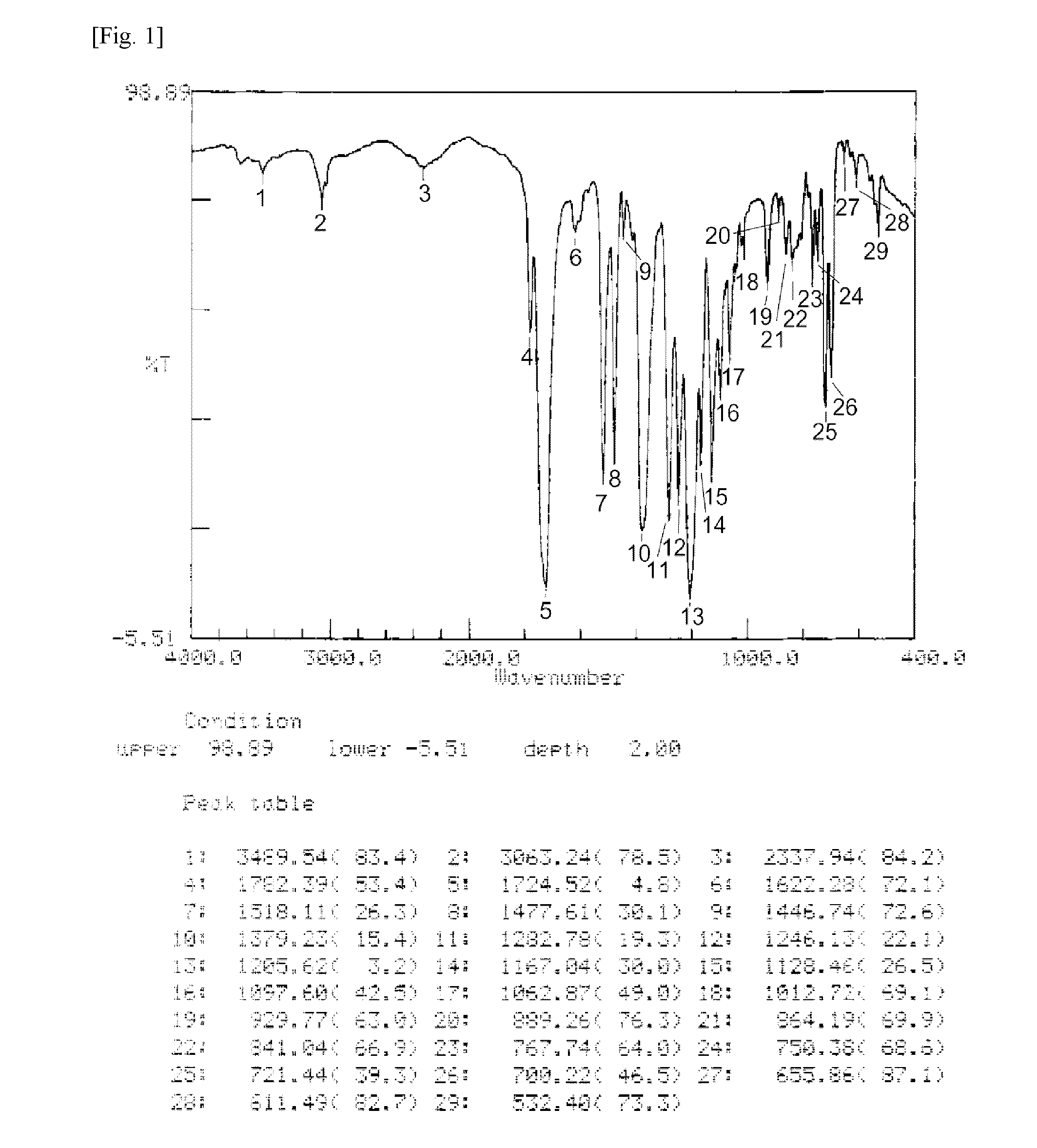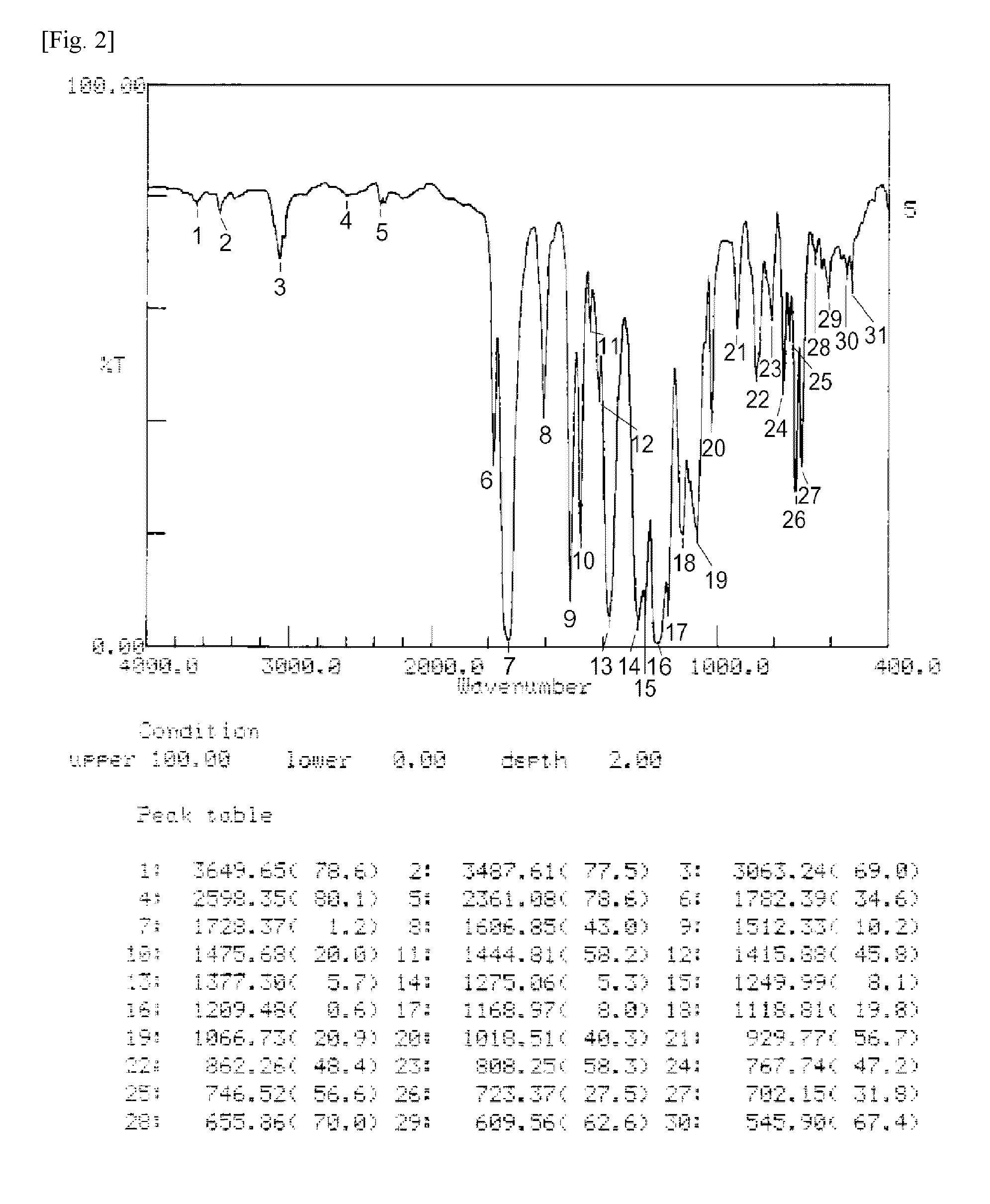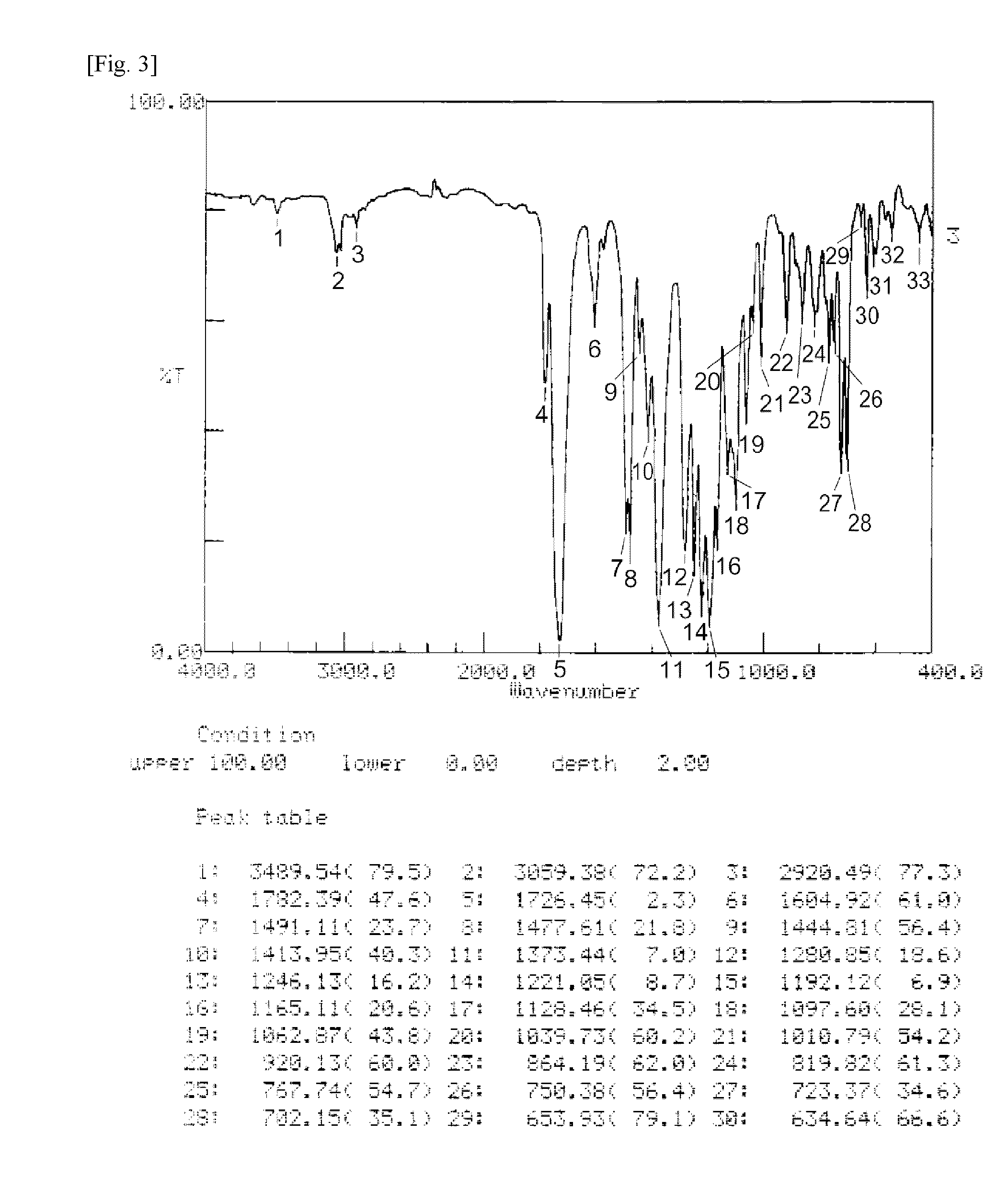Ester group-containing tetracarboxylic acid dianhydride, polyester polyimide precursor, polyesterimide, and methods for producing same
a technology of tetracarboxylic acid dianhydride and ester group, which is applied in the direction of printed circuits, printed circuit aspects, organic chemistry, etc., can solve the problems of warping, separation and breakage of films, and the normal formation/processing of polyimides themselves is not easy, and achieves excellent solvent solubility, excellent physical properties, and high polymerization reaction properties.
- Summary
- Abstract
- Description
- Claims
- Application Information
AI Technical Summary
Benefits of technology
Problems solved by technology
Method used
Image
Examples
example 1
Synthesis of Ester Group-Containing Tetracarboxylic Acid Dianhydride (TAOPP-BP)
Formula (6):
[0131]
Ester group-containing tetracarboxylic acid dianhydride expressed by this formula (hereinafter referred to as “TAOPP-BP”) was synthesized as follows. First, 10.11 g (48 mmol) of trimellitic anhydride chloride was dissolved in 45.5 mL of dewatered tetrahydrofuran (THF) in an egg-plant flask, and then the flask was sealed with a septum cap to prepare solution A. In a different flask, 6.77 g (20 mmol) of diol expressed by Formula (10) (hereinafter referred to as “OPP-BP”) was dissolved in 68.5 mL of THF, to which 9.7 mL (120 mmol) of pyridine was added and the flask was sealed with a septum cap to prepare solution B.
[0132]Solution B was slowly dripped into solution A in a syringe under cooling in an ice bath and also under agitation, after which the mixture was agitated for 12 hours at room temperature. After the reaction, white precipitates (pyridine hydrochloride) were filtered out and th...
example 2
Synthesis of Ester Group-Containing Tetracarboxylic Acid Dianhydride (TADHTP-Ph)
Formula (7):
[0136]
Ester group-containing tetracarboxylic acid dianhydride expressed by this formula (hereinafter referred to as “TADHTP-Ph”) was synthesized as follows. First, 10.10 g (48 mmol) of trimellitic anhydride chloride was dissolved in 45.5 mL of dewatered THF in an egg-plant flask, and then the flask was sealed with a septum cap to prepare solution A. In a different flask, 6.77 g (20 mmol) of diol expressed by Formula (11) (hereinafter referred to as “DHTP-Ph”) was dissolved in 68.5 mL of THF, to which 9.7 mL (120 mmol) of pyridine was added and the flask was sealed with a septum cap to prepare solution B.
[0137]Solution B was slowly dripped into solution A in a syringe under cooling in an ice bath and also under agitation, after which the mixture was agitated for 12 hours at room temperature. After the reaction, white precipitates (pyridine hydrochloride) were filtered out and the filtrate was ...
example 3
Synthesis of Ester Group-Containing Tetracarboxylic Acid Dianhydride (TADHQP-DP)
Formula (8):
[0140]
Ester group-containing tetracarboxylic acid dianhydride expressed by this formula (hereinafter referred to as “TADHQP-DP”) was synthesized as follows. First, 5.05 g (24 mmol) of trimellitic anhydride chloride was dissolved in 3.28 mL of dewatered N,N-dimethylacetamide (DMAc) in an egg-plant flask, and then the flask was sealed with a septum cap to prepare solution A. In a different flask, 5.24 mL of DMAc and 3.24 mL (40 mmol) of pyridine were added to 4.91 g (10 mmol) of diol expressed by Formula (12) (hereinafter referred to as “DHQP-DP”), which was then dissolved by heating to 110° C., and then the flask was sealed with a septum cap to prepare solution B.
[0141]Before precipitates generated, solution B was added to solution A and then 2 mL of DMAc was added and the mixture was agitated for 12 hours at room temperature. After the reaction, the mixture was dripped into water and the prec...
PUM
| Property | Measurement | Unit |
|---|---|---|
| Specific volume | aaaaa | aaaaa |
| Mass | aaaaa | aaaaa |
| Fraction | aaaaa | aaaaa |
Abstract
Description
Claims
Application Information
 Login to View More
Login to View More - R&D
- Intellectual Property
- Life Sciences
- Materials
- Tech Scout
- Unparalleled Data Quality
- Higher Quality Content
- 60% Fewer Hallucinations
Browse by: Latest US Patents, China's latest patents, Technical Efficacy Thesaurus, Application Domain, Technology Topic, Popular Technical Reports.
© 2025 PatSnap. All rights reserved.Legal|Privacy policy|Modern Slavery Act Transparency Statement|Sitemap|About US| Contact US: help@patsnap.com



